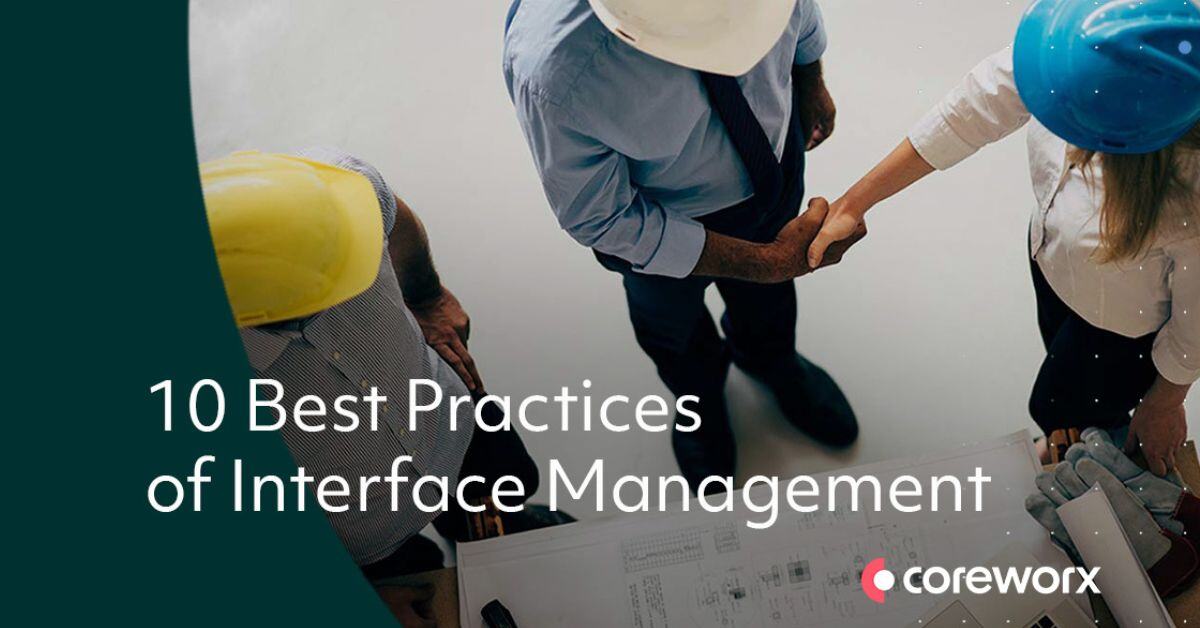
Latest Trends in High Impact Interface Management Programs
The execution of mega projects continually presents difficulties in monitoring interface progress and risk for an owner. This is in part due to them typically being managed in multiple scope packages. In order to establish interface agreements, awarded contractors face interacting with one another throughout the project life cycle, all while being spread across different geographical locations and different cultures. Traditional databases, spreadsheets, and paper-based interface management systems limit the efficiency of contractor interactions, deliverable timelines, and the oversight of interface issues.
The volume of interface-related information and the number of communication channels are easy to underestimate in today’s mega-project environment.
Alignment on Interface Management Goals
Leaders in the practice of interface management are seeing positive results by focusing on development in three key areas:
- Recognizing the importance of alignment of all project stakeholders on interface management goals.
- Applying a disciplined approach to managing the communication, coordination, and responsibility of the common boundaries between project parties, phases, or physical entities.
- They are deploying the most advanced project management and collaboration tools available to manage interfaces with certainty.
 The success of a project’s Interface Management program hinges on the early alignment of project team members involved with the program. Alignment of key stakeholders is critical to ensuring everyone is working towards the same goals, with clear methods to resolve potential conflict. Once established, the program ensures all interactions between contractors related to the interface are managed and carefully coordinated to avoid incidents arising from misunderstandings or lack of information.
The success of a project’s Interface Management program hinges on the early alignment of project team members involved with the program. Alignment of key stakeholders is critical to ensuring everyone is working towards the same goals, with clear methods to resolve potential conflict. Once established, the program ensures all interactions between contractors related to the interface are managed and carefully coordinated to avoid incidents arising from misunderstandings or lack of information.
Developing an Interface Management Plan with clearly described roles, responsibilities, and expectations of both the owner and contractors will assist in achieving alignment in the Interface Management Program. The Interface Management Plan ensures parties understand the Interface Management objectives for the project, and how conflicts or barriers can be overcome through consistent communications strategies between all parties.
Communication & Coordination of Interfaces
An important component of any Interface Management program is to plan how communications will be conducted between all parties. Individuals must know what information to communicate, how to communicate this information, and when to communicate it.
Effective communication is crucial in mega projects that involve multiple parties in different geographical locations. Consistency in communication not only reduces risk, but also encourages collaboration between parties regardless of where they reside or the cultural and language differences that may exist.
The communications strategy should address:
- Identification and definition of interfaces.
- A communication procedure for requesting, responding to, and tracking an interface must support ongoing change as the project progresses.
- Documentation of an interface, and the contractors' ability to exchange deliverables and information related to that interface.
- The monitoring and control of all deliverables and the overall progress of each interface by the project team and key stakeholders.
- Close out procedures upon completion of an interface that includes communication to key stakeholders.
Interface Management Tools
To support an Interface Management program, a collaborative solution with the ability to manage thousands of interfaces and interactions between parties is essential.
The investment made in an interface management tool should consider the dynamic nature of projects, acknowledging that no two projects are identical. Tools that offer project teams the ability to customize forms, processes, and data attributes in order to meet project-specific needs will fit the bill. But flexibility has its pitfalls too. Resist the temptation to use a “platform” or “toolkit” approach and ensure you receive a box full of prebuilt templates that are accepted and proven in the industry.
Specific capabilities to consider in an Interface Management Solution include:
- Workflow automation of interface-related business processes. Workflow implemented with a specific purpose can significantly increase the efficiency and productivity of the project team and, in the case of Interface Management ensure awareness of all project interfaces. Additional benefits include increased consistency and efficiency, better process control and more consistent communication.
- Dashboards and reports that equip the Owner, project management consultant. and contractors to monitor progress of work and identify potential issues (e.g., delayed deliverables and contractors that are not communicating). Real-time accurate information in the hands of the project team leads to better decisions; and better decisions will ultimately aid in the successful outcome of the project.
- Document Management and an audit trail of all interface-related information. Documents generated as part of Interface Management should be considered controlled project documents, and so managed and maintained in a document management system (DMS). A complete audit trail of all interface-em dash
- related interactions enables traceability and reconstruction of document lifecycle events to address disputes or litigation.
Conclusion
Interface Management can improve overall project performance, but success hinges on all parties being aligned with the project’s Interface Management Plan—a communications strategy that supports the volume and complexity of the communications channels, as well as tools that provide a collaborative work environment for all parties involved. Significant advances are being made in the discipline of Interface Management. Implementation of these best practices will help improve the ability to manage project interfaces with certainty, with the reward of a successfully implemented Interface Management program.
Learn More
Effective, consistent communication is critical to projects with multiple contracting parties across the globe. Proper communication helps align delivery teams to ensure technical compliance, avoid design integration issues, and prevent costly delays and rework. Coreworx Interface Connect can help projects achieve this. To see it in action, watch our brief demo video today.



